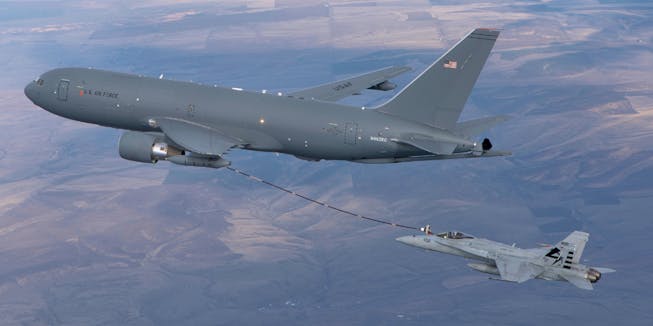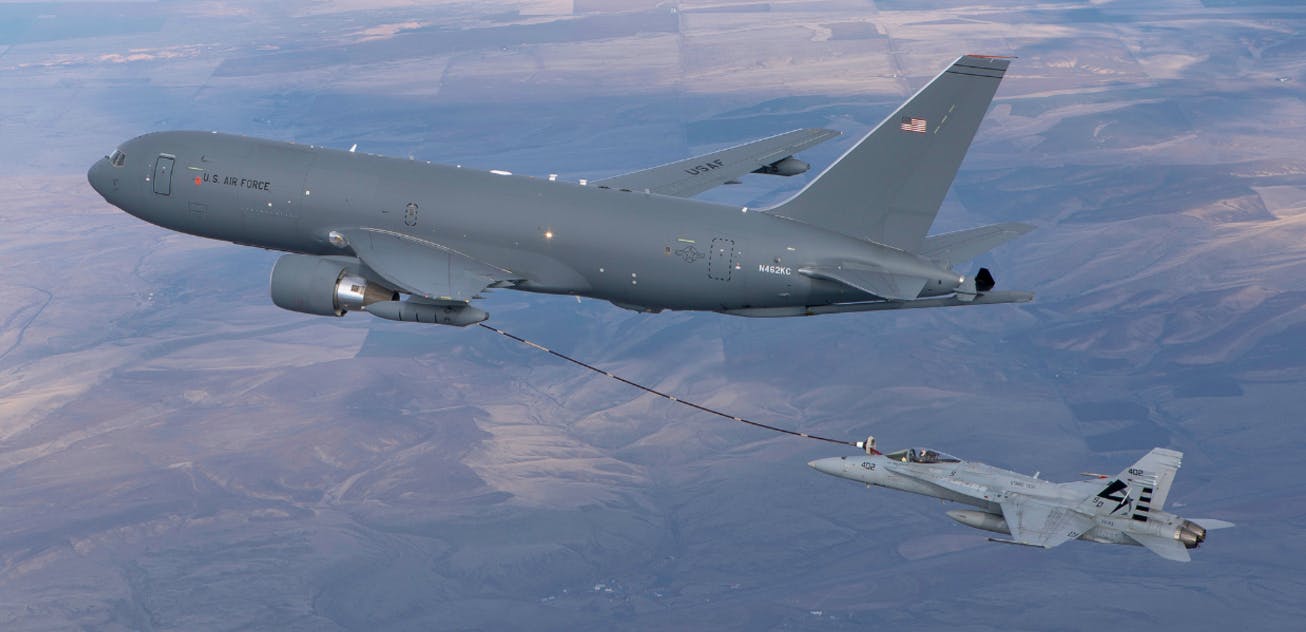Before Boeing 737 Max
Boeing already has a safe MCAS
After two deadly crashes of a 737 Max, Boeing is working on an improved version of the flight control software MCAS. However, another plane already has it.

Boeing KC-46A Pegasus: Already possessed an improved MCAS.

Boeing KC-46A Pegasus: Already possessed an improved MCAS.
Prior to the crash into the sea of a Lion Air Boeing 737 Max on October 20th, 2018, which killed 189 people, the pilots fought in vain against automated flight control. As the evaluation of the flight data recorder revealed, the Maneuvering Characteristics Augmentation System (MCAS) flight control software pushed the nose down more than 20 times within six minutes. Data from one of the two angle-of-attack sensors indicated an excessively high angle of attack. According to that data, a stall was imminent.
But the sensor supplying data was faulty and MCAS fought against an imaginary steep ascent. After yet another 737 Max of Ethiopian Airlines crashed under similar circumstances in March 2019, the plane was grounded and Boeing since has been working on an update for the flight control software. But according to a report in the Wall Street Journal, Boeing developed a version of the MCAS with more redundancies before the 737 Max.
Pilots and MCAS not working against each other
The flight control software was designed for the KC-46A Pegasus, which is based on the Boeing 767. The MCAS of the military tanker relies on data from multiple sensors and not just one, as was the on the 737 Max. In addition, it intervenes less and does not push the nose of the jet down repeatedly.
While the Boeing 737 Max pilots and MCAS worked against each other during the accidents, the tanker pilots take full control as soon as they intervene with the controls. A Boeing spokesman told the newspaper that the two systems were not directly comparable. According to the report, the tanker actually has a more advanced computer system for flight controls.
Tanks under wings and larger engines
This makes it easier for the MCAS to compare data from different sensors. Nevertheless, representatives of the U.S. Air Force also wanted to be safe and met with Boeing representatives after the Lion Air crash. It was their intention to ensure that the KC-46A Pegasus would not face similar problems as the Max.
But why do these two planes need the MCAS? Because the tanker has additional tanks below the wings, which provide additional lift, it could reach a higher pitch under certain conditions. The MCAS was designed to counter the risk of a stall in such situations.
Similar solution
The 737 Max relies on it because compared to the 737 NG, it has larger engines, which are mounted slightly higher and further forward, and have a similar effect as the tanks under the wings of the KC-46A Pegasus. Looking at the tanker MCAS and its redundancies, an informant familiar with its development told the Wall Street Journal, “You don’t want the solution to be worse than the original problem.
This will also apply to the 737 Max in the future. According to the newspaper, the revised MCAS of the passenger jet will be similar to that of the tanker.
